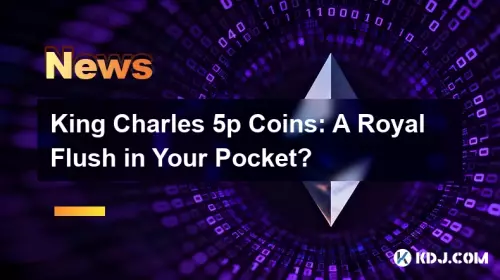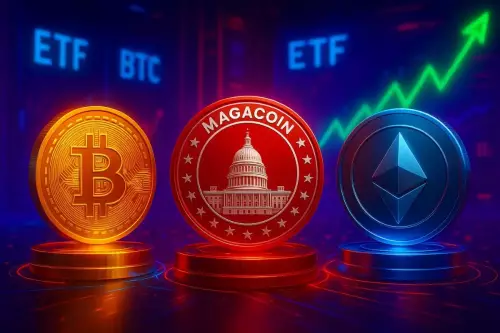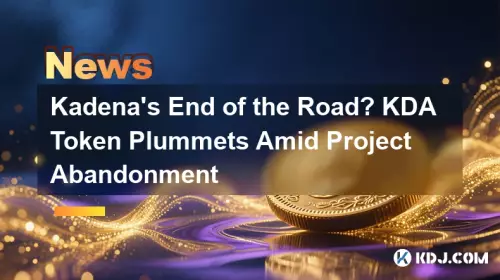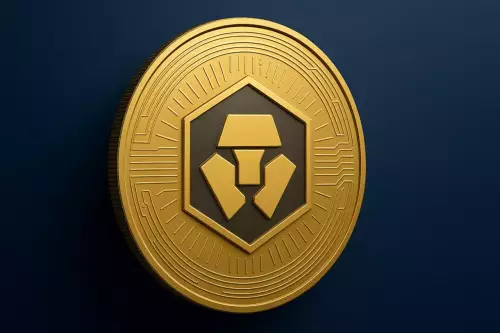 |
|
 |
|
 |
|
 |
|
 |
|
 |
|
 |
|
 |
|
 |
|
 |
|
 |
|
 |
|
 |
|
 |
|
 |
|

Navigating the Blockchain Landscape: Top Platforms for Building Decentralized Applications in 2024
The burgeoning realm of blockchain technology has witnessed a proliferation of platforms, each vying for prominence in the development of decentralized applications (dApps). Blockchains empower trustless value transfers, governed by preordained terms enshrined in smart contracts, a technological innovation with far-reaching implications for sectors ranging from finance to supply chain management. This comprehensive analysis examines the leading blockchain platforms poised to shape the dApp landscape in 2024.
Ethereum: The Unrivaled Titan of Smart Contracts
Ethereum remains the undisputed leader in the smart contract arena, having debuted in 2015 with groundbreaking capabilities. Programmed in Solidity, a versatile language drawing inspiration from C++, Python, and JavaScript, Ethereum's smart contracts have ushered in an era of decentralized applications encompassing cryptocurrency exchanges, lending protocols, NFT marketplaces, sophisticated trading platforms, and more.
Ethereum's dominance is reflected in its unparalleled market capitalization, dwarfing the combined market value of its nearest rivals among the top 100 smart contract blockchains. Beyond its market sway, Ethereum boasts the industry's largest developer community and an unmatched arsenal of tools for smart contract development.
The ubiquity of Ethereum's smart contracts framework has prompted many emerging blockchain platforms to embrace compatibility with the Ethereum Virtual Machine (EVM) as a competitive advantage. This compatibility allows seamless porting of existing Ethereum-based dApps and facilitates the creation of new smart contracts through user-friendly tools like Truffle and Remix.
Solana: The Scalability Contender
While Ethereum reigns supreme, Solana has emerged as a formidable challenger, primarily due to its superior scalability. Solana can accommodate a vast influx of transactions while maintaining relatively low transaction costs.
Leveraging a Proof-of-Stake consensus mechanism and implementing the Proof-of-History system to expedite node synchronization and transaction validation, Solana is poised to enhance its scalability even further with the impending release of Firedancer. This high-performance Solana client, developed by the illustrious high-frequency trading firm Jump Trading, has demonstrated the potential to process over 1 million transactions per second in test environments.
Despite its recent popularity as a launchpad for meme coins, Solana's capabilities extend far beyond speculative assets. The Helium project utilizes Solana's blockchain for its token incentive system underpinning decentralized wireless networks like Helium 5G. Access Protocol, a platform empowering online publications with premium content offerings, also relies on Solana's scalability.
Hyperledger Fabric: Tailored for Enterprise Applications
Hyperledger Fabric stands apart as an enterprise-grade permissioned blockchain framework. Permissioned blockchains, unlike public blockchains such as Ethereum and Bitcoin where anyone can operate a node, restrict participation to pre-approved entities. This selective approach ensures privacy and confidentiality, crucial for enterprises seeking to conduct transactions without compromising sensitive information that could undermine their competitive edge.
As an open-source framework, Hyperledger Fabric is part of the broader Hyperledger project under the Linux Foundation's auspices. Other specialized frameworks under this umbrella include Besu, Iroha, and Indy.
Polygon: Amplifying Ethereum's Potential
Polygon has carved a niche as an ecosystem of layer 2 blockchain platforms dedicated to augmenting Ethereum's scalability. The Polygon Proof of Stake (PoS) platform, the most prevalent within the ecosystem, is an Ethereum-compatible blockchain offering significantly reduced transaction fees.
The Polygon PoS platform has attracted mainstream attention, with notable partnerships including Nike's .Swoosh initiative and Reddit's Collectible Avatars NFTs. Beyond PoS, Polygon is actively developing a suite of Ethereum-centric solutions, such as Polygon zkEVM and Polygon Miden, alongside the Polygon ID identity system.
XRP Ledger: Fast and Cost-Effective Transactions
The XRP Ledger distinguishes itself as a high-speed, low-cost distributed platform for transaction settlement. XRP transactions are processed within three to five seconds, with transaction fees amounting to less than a tenth of a cent.
The XRP Ledger offers diverse applications for distributed ledger technology. A noteworthy example is the Xahau sidechain, which empowers developers to create smart contracts directly interacting with ledger elements such as objects, balances, and transactions. This capability is achieved through Hooks, a feature programmable in various languages and subsequently compiled into WebAssembly, amplifying the ledger's flexibility and functionality.
Additionally, the XRP Ledger incorporates a built-in automated market maker (AMM), enabling users to seamlessly exchange digital assets issued on the platform. This AMM functionality mirrors decentralized exchanges like Uniswap, providing a decentralized venue for asset trading and liquidity within the XRP Ledger ecosystem.
Avalanche: Scalability with Smart Contract Support
Avalanche, a Proof-of-Stake blockchain, combines scalability with smart contract support. Its defining feature is Subnets, allowing developers to create highly specialized blockchains leveraging the security provided by validators participating in Avalanche's Proof-of-Stake consensus protocol. Subnets can consist of a single blockchain or connect multiple blockchains.
The Avalanche ecosystem revolves around the Primary Network, a specialized subnet comprising three blockchains designed for specific use cases:
- Platform Chain (P-Chain): Staking and validation
- Contract Chain (C-Chain): EVM-compatible smart contracts and dApps
- Exchange Chain (X-Chain): Sending and receiving funds
Avalanche's blockchain platform can process over 4,500 transactions per second, with transactions reaching finality in an average of 0.79 seconds.
Sei: A Lightning-Fast Trading Platform
Sei has emerged as a blockchain tailored specifically for asset trading, boasting an impressive capacity of 20,000 transactions per second and transaction finality in less than half a second.
A key differentiator is its Twin-Turbo consensus mechanism, enhancing efficiency in the blockchain's validation process and speeding up transaction validations.
The Sei development team is committed to ongoing improvement, with the community eagerly anticipating the launch of Sei v2. This upgrade aims to seamlessly integrate the benefits of Sei with Ethereum development tools.
The Blockchain Landscape: A Crowded Marketplace
The blockchain market is teeming with numerous platforms, each vying for attention from users and developers. However, not all blockchains are created equal. Selecting a platform should involve careful consideration of its unique features and capabilities.
Our recommendation is to prioritize the larger, more established platforms before venturing into lesser-known options. Ethereum and Solana offer unparalleled features and capabilities, with other platforms only recommended if they provide distinct advantages not available on these established giants.
Navigating the Cryptocurrency and Blockchain Landscape
For those interested in investing in cryptocurrencies and blockchain technology, we recommend exploring our comprehensive guide to the best cryptocurrencies for investment opportunities.
Haftungsausschluss:info@kdj.com
Die bereitgestellten Informationen stellen keine Handelsberatung dar. kdj.com übernimmt keine Verantwortung für Investitionen, die auf der Grundlage der in diesem Artikel bereitgestellten Informationen getätigt werden. Kryptowährungen sind sehr volatil und es wird dringend empfohlen, nach gründlicher Recherche mit Vorsicht zu investieren!
Wenn Sie glauben, dass der auf dieser Website verwendete Inhalt Ihr Urheberrecht verletzt, kontaktieren Sie uns bitte umgehend (info@kdj.com) und wir werden ihn umgehend löschen.
-

-

- Waymos AV-Tests am Flughafen Newark: Lohnt sich das KI-Wagnis von Alphabet?
- Oct 23, 2025 at 08:36 am
- Waymos selbstfahrende Autotests am Flughafen Newark signalisieren die KI-Dominanz von Alphabet und wirken sich sowohl auf die Aktien- als auch auf die Kryptomärkte aus. Ist das die Zukunft des Transports und der Investitionen?
-

-

- Solana, Crypto Advisory und Forward Industries: Eine New Yorker Minute zur Zukunft des Finanzwesens
- Oct 23, 2025 at 08:00 am
- Forward Industries greift mit einem neuen Krypto-Beratungsgremium tief in Solana ein und signalisiert damit einen großen Wandel in den Treasury-Strategien der Unternehmen. Ist das die Zukunft des Finanzwesens?
-

- MAGACOIN: Ethereum Whales tauchen in den heißesten Vorverkauf des Jahres 2025 ein
- Oct 23, 2025 at 07:59 am
- MAGACOIN FINANCE sorgt mit seinem explodierenden Vorverkauf für Aufsehen und lockt Ethereum-Wale an, die in einem volatilen Markt einen sicheren Hafen suchen. Ist das das Krypto-Juwel, auf das Sie gewartet haben?
-

-

- King Charles 5-Pence-Münzen kommen in Umlauf: Ein Royal Flush für Münzsammler!
- Oct 23, 2025 at 07:07 am
- King Charles 5-Pence-Münzen sind jetzt im Vereinigten Königreich im Umlauf! Entdecken Sie die Begeisterung, das Eichenblatt-Design und warum Sammler von dieser königlichen Veröffentlichung so begeistert sind.
-

- 5-Pence-Münzen von King Charles kommen in Umlauf: Ein Leitfaden für Sammler
- Oct 23, 2025 at 07:07 am
- Die 5-Pence-Münzen von König Karl III. sind jetzt im Umlauf! Entdecken Sie das neue Design, seine Bedeutung und warum Sammler begeistert sind. Machen Sie sich bereit für die Jagd nach diesen historischen Münzen!
-































































